
There are typically two types of clothing worn in Japan: traditional clothing known as Japanese clothing, including the national dress of Japan, the kimono, and Western clothing, which encompasses all else not recognised as either national dress or the dress of another country.

A sarong or a sarung is a large tube or length of fabric, often wrapped around the waist, worn in Southeast Asia, South Asia, Western Asia, Northern Africa, East Africa, West Africa, and on many Pacific islands. The fabric often employs woven plaid or checkered patterns or may be brightly colored by means of batik or ikat dyeing. Many modern sarongs have printed designs, often depicting animals or plants. Different types of sarongs are worn in different places in the world, notably the lungi in the Indian subcontinent and the izaar in the Arabian Peninsula.

African clothing is the traditional clothing worn by the people of Africa.

The culture of Nigeria is shaped by Nigeria's multiple ethnic groups. The country has 527 languages, seven of which are extinct. Nigeria also has over 1,150 dialects and ethnic groups. The three largest ethnic groups are the Hausas that are predominantly in the north, the Yorubas who predominate in the southwest, and the Igbos in the southeast. There are many other ethnic groups with sizeable populations across the different parts of the country. The Kanuri people are located in the northeast part of Nigeria, the Tiv people of north central and the Efik-Ibibio are in the south South. The Bini people are most frequent in the region between Yorubaland and Igboland.
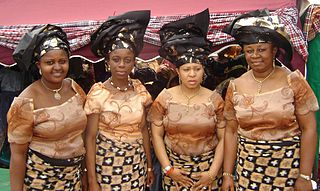
The wrapper, lappa, or pagne is a colorful garment widely worn in West Africa by both men and women. It has formal and informal versions and varies from simple draped clothing to fully tailored ensembles. The formality of the wrapper depends on the fabric used to create or design it.

A head tie, also known as a headwrap, is a women's cloth head scarf that is commonly worn in many parts of West Africa and Southern Africa. The head tie is used as an ornamental head covering or fashion accessory, or for functionality in different settings. Its use or meaning can vary depending on the country and/or religion of those who wear it. Among Jewish women, the Biblical source for covering hair comes from the Torah in the book of Bamidbar Parshas Nasso which contains the source for the obligation of a married woman to cover her hair. An eesha sotah is a woman whose husband suspects her of having acted immorally. The Torah commands the Kohein to take various steps to demonstrate that the sotah has deviated from the modest and loyal path of most married Jewish women. Among the procedures, the pasuk clearly states: "ufora es rosh haisha..."and he shall uncover the hair of the head of the woman (5:18). One can only uncover something that has previously been covered; in this case the Torah is referring to the married woman's hair. Among Christian women in certain parts of the world, such as Africa and the Caribbean, the head tie is worn as a headcovering in obedience to 1 Corinthians 11:4–13.
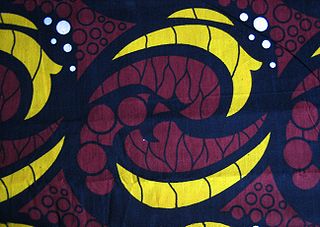
A kitenge or chitenge is an East African, West African and Central African piece of fabric similar to a sarong, often worn by women and wrapped around the chest or waist, over the head as a headscarf, or as a baby sling. Kitenges are made of colorful fabric that contains a variety of patterns and designs. In coastal areas of Kenya and in Tanzania, kitenges often have Swahili sayings written on them. There seems to be a confusion with the Kangas, which indeed carry texts in contrast with kitenges, which apparently typically do not carry texts.
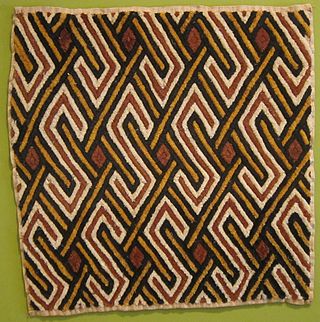
African textiles are textiles from various locations across the African continent. Across Africa, there are many distinctive styles, techniques, dyeing methods, and decorative and functional purposes. These textiles hold cultural significance and also have significance as historical documents of African design.

Pakaian is the term for clothing in Malaysia's national language. It is referring to things to wear such as shirts, pants, shoes etc. Since Malaysia is a multicultural nation: Malay, Chinese, Indian and hundreds of other indigenous groups of Malay Peninsula and Borneo, each has its own traditional and religious articles of clothing all of which are gender-specific and may be adapted to local influences and conditions. Previously, traditional clothes were worn daily. However, by excluding Baju Melayu, Baju Kurung many are now only worn on special occasions such as marriage ceremonies and cultural events.

Aso oke hat, known as fila in the Yoruba language, is a soft hat traditionally worn by the Yoruba people of Western Africa. It is made of hand-woven aso oke fabric, cotton, velvet, or damask. They are usually lined with cotton, but can be unlined if crafted to be worn for a single event.

Aso oke fabric, is a hand-woven cloth created by the Yoruba people of west Africa. Usually woven by men and women, the fabric is used to make men's gowns, called agbada and hats, called fila, as well as women's wrappers, called iro and head tie, called gele.
Igbo culture are the customs, practices and traditions of the Igbo people of southeastern Nigeria. It consists of ancient practices as well as new concepts added into the Igbo culture either by cultural evolution or by outside influence. These customs and traditions include the Igbo people's visual art, music and dance forms, as well as their attire, cuisine and language dialects. Because of their various subgroups, the variety of their culture is heightened further.
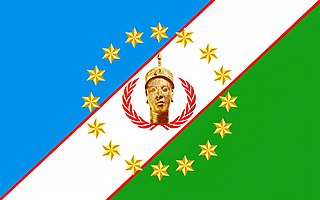
The Yoruba people are a West African ethnic group who mainly inhabit parts of Nigeria, Benin, and Togo. The areas of these countries primarily inhabited by the Yoruba are often collectively referred to as Yorubaland. The Yoruba constitute more than 48 million people in Africa, are over a million outside the continent, and bear further representation among members of the African diaspora. The vast majority of the Yoruba population is today within the country of Nigeria, where they make up 20.7% of the country's population according to Ethnologue estimations, making them one of the largest ethnic groups in Africa. Most Yoruba people speak the Yoruba language, which is the Niger-Congo language with the largest number of native or L1 speakers.
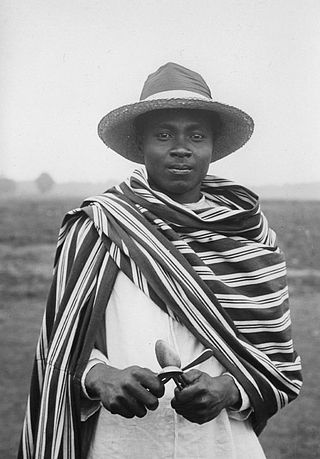
A lamba is the traditional garment worn by men and women that live in Madagascar. The textile, highly emblematic of Malagasy culture, consists of a rectangular length of cloth wrapped around the body.

History of clothing in the Indian subcontinent can be traced to the Indus Valley civilization or earlier. Indians have mainly worn clothing made up of locally grown cotton. India was one of the first places where cotton was cultivated and used even as early as 2500 BCE during the Harappan era. The remnants of the ancient Indian clothing can be found in the figurines discovered from the sites near the Indus Valley civilisation, the rock-cut sculptures, the cave paintings, and human art forms found in temples and monuments. These scriptures view the figures of human wearing clothes which can be wrapped around the body. Taking the instances of the sari to that of turban and the dhoti, the traditional Indian wears were mostly tied around the body in various ways.

The boubou or grand boubou is a flowing wide-sleeved robe worn across West Africa, and to a lesser extent in North Africa, related to the dashiki suit.

Aso ebi (Yoruba), sometimes spelled as asoebi in Nigeria and ashobie in Sierra Leone and the Gambia, is a uniform dress or dressing code/style that is traditionally worn by the Yoruba People and acculturized by some other African cultures, is an indicator of cooperation, camaraderie and solidarity during ceremonies, events and festive periods. The purpose of wearing the dress can be to serve as self-identification with age mates, relatives or friends during social occasions or funerals.

The fashion industry in Nigeria plays an important cultural role and contributes significantly to the country's economy. Clothing incorporates a variety of colours, fabrics, and embellishments. Many of the component cultures of Nigeria wear styles that are characteristic of their tribal society and customs. Nigeria produces fashionable textiles and finished garments and has designers who have achieved international recognition.
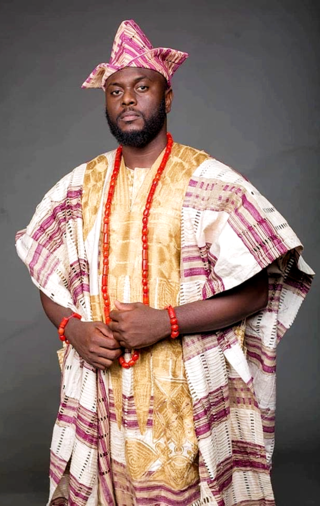
Agbada is the flowing robe traditionally worn by the Yoruba people across West Africa. It comes with an inner cloth of varying lengths and it also comes with a pair of bottom wear in form of native trousers called Shokoto. It also is worn most times with different caps like fila or abeti aja. Traditional Yoruba beads are often worn with it. The agbada a male attire worn for special events and everyday life, depending on the extravagance of the garment. It is a distinct robe that comes in different styles and designs

Yoruba women’s clothing is the traditional attire worn by women of the Yoruba ethnic group in parts of Nigeria, Benin and Togo in a region called Yorubaland. The clothing reflects the rich culture, history and aesthetic preferences of the Yoruba people.






















